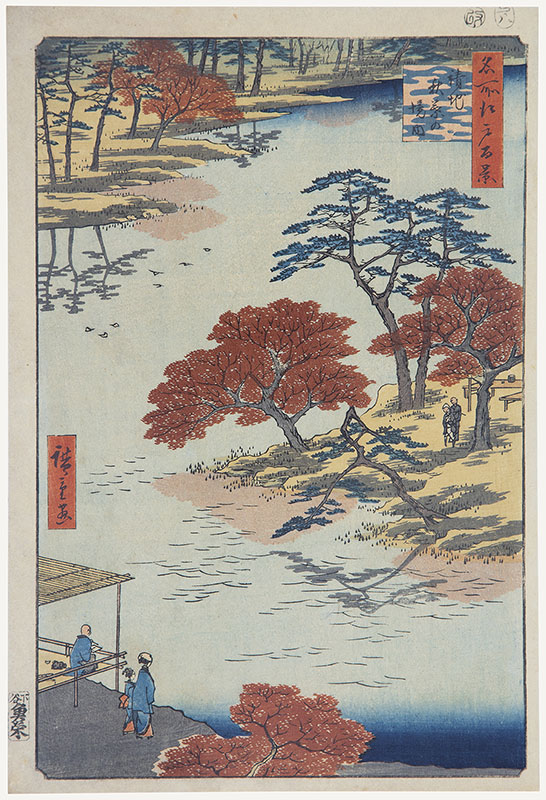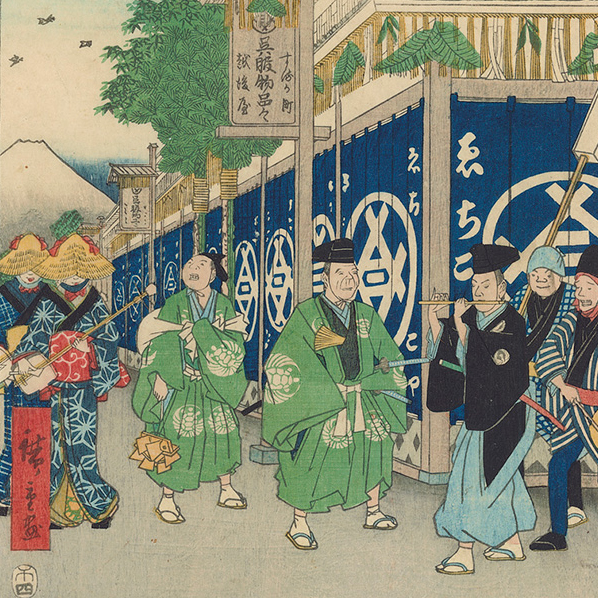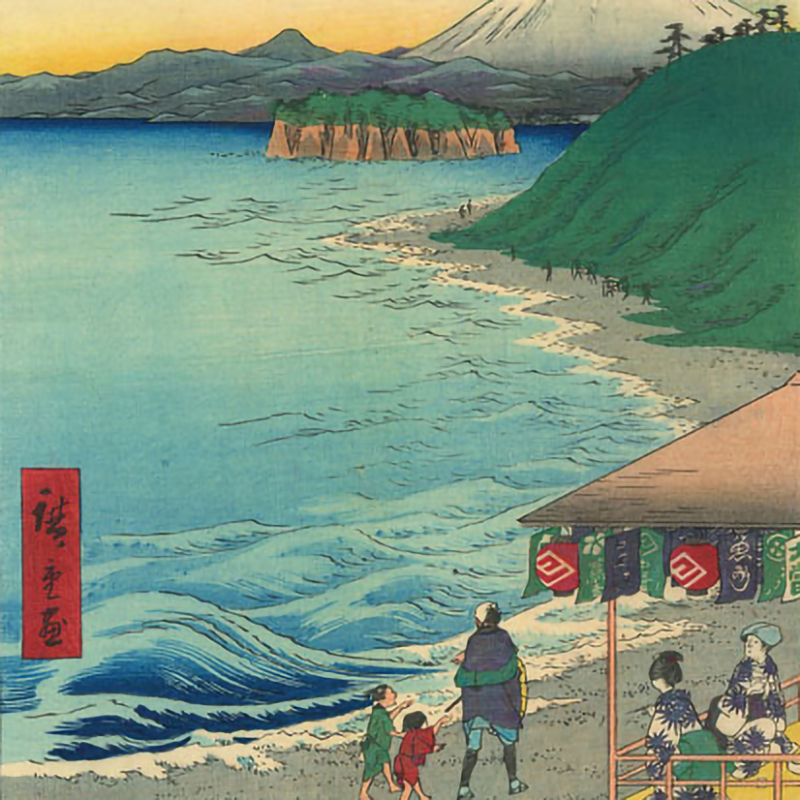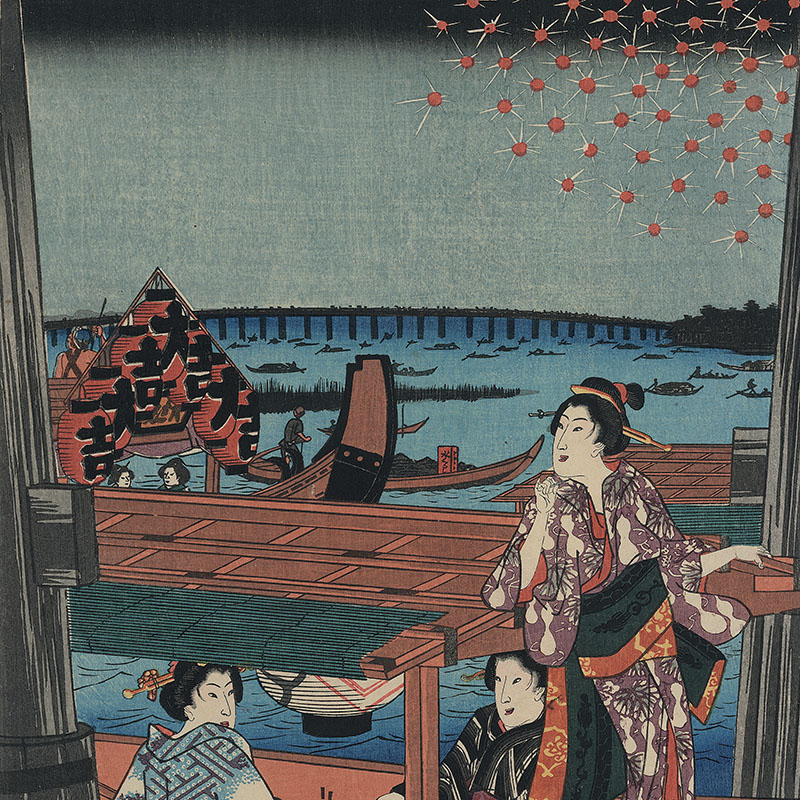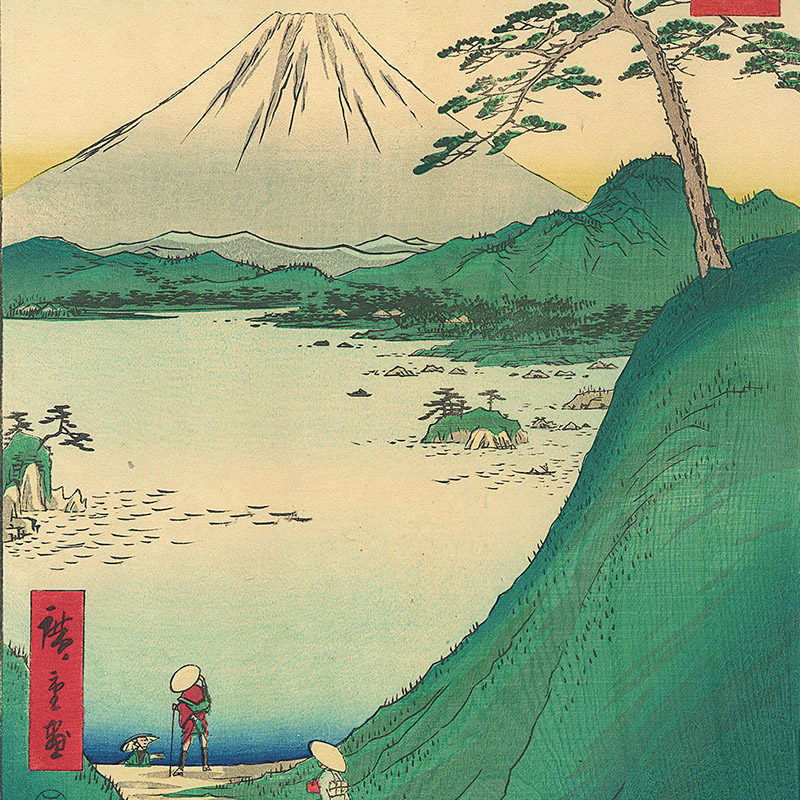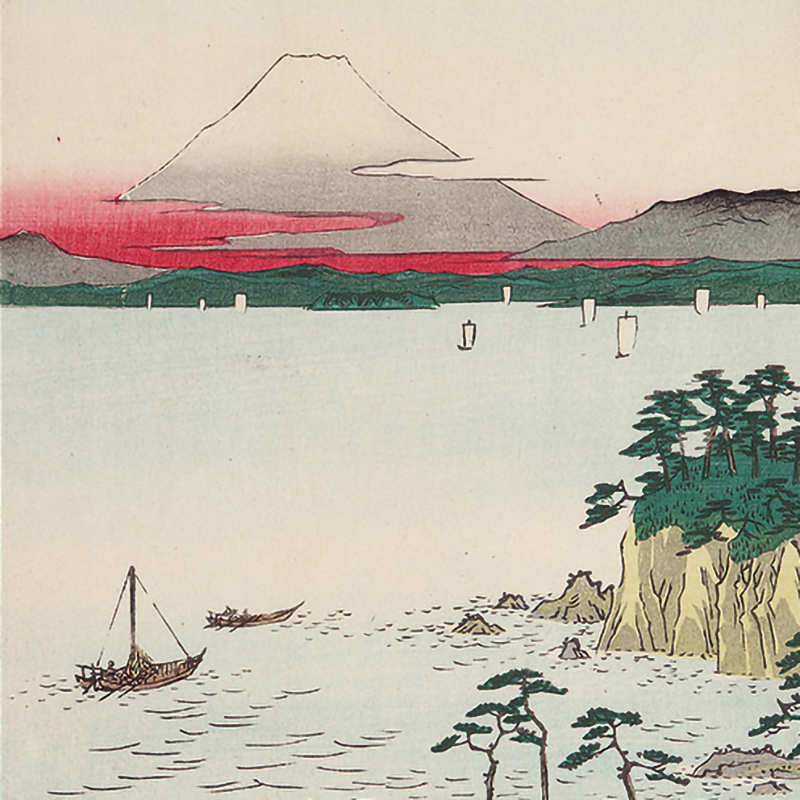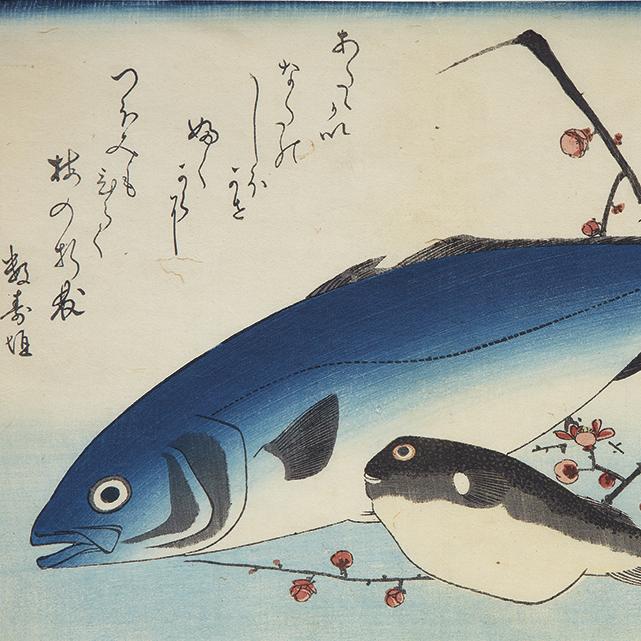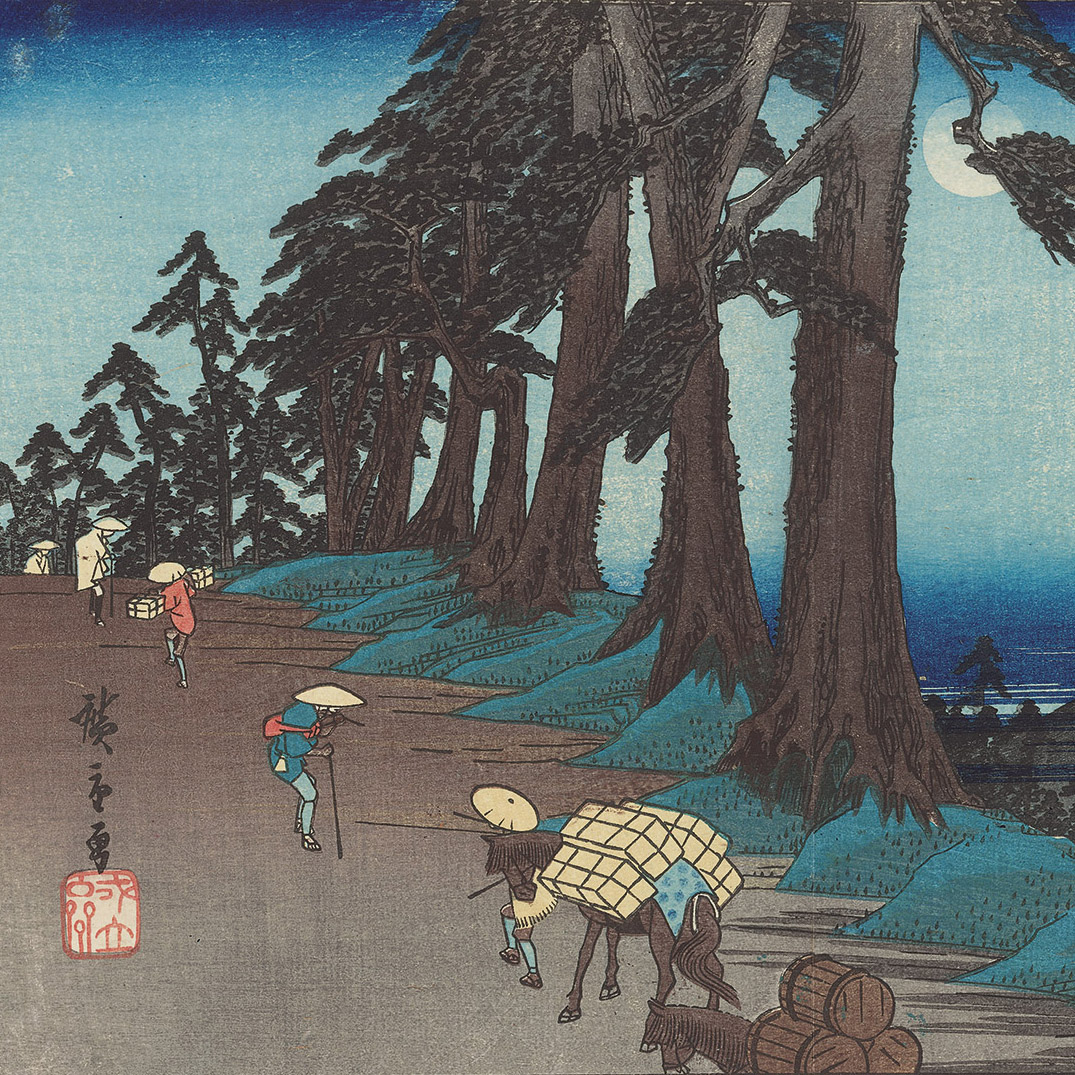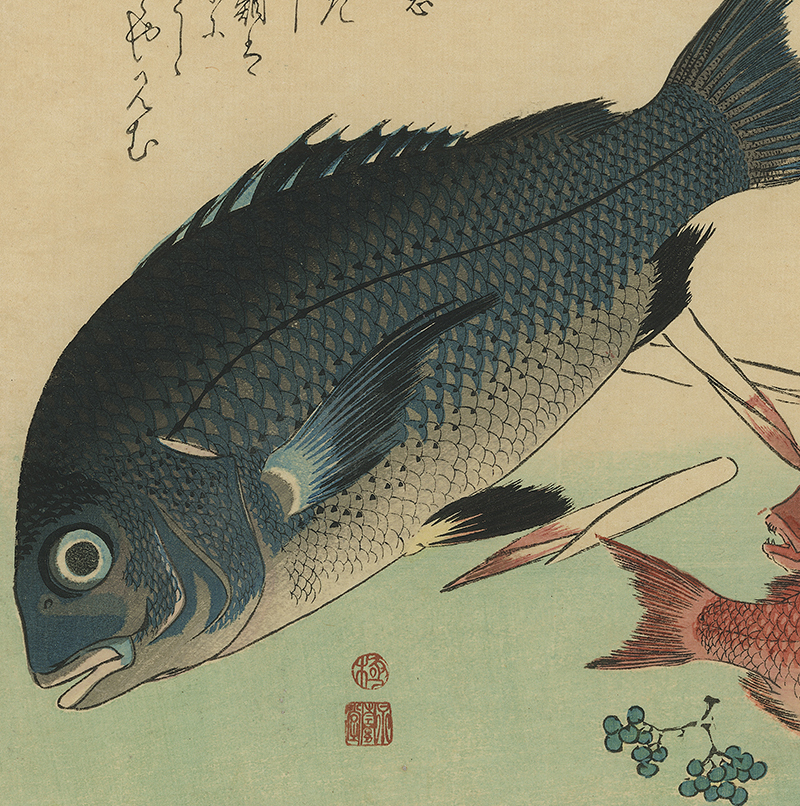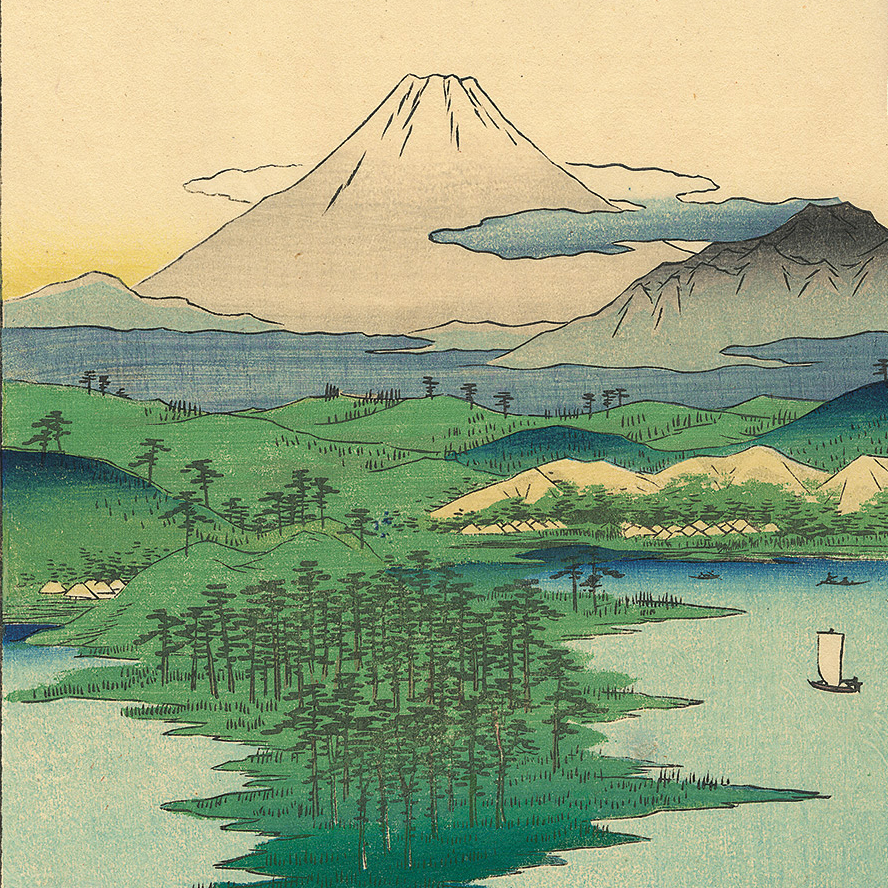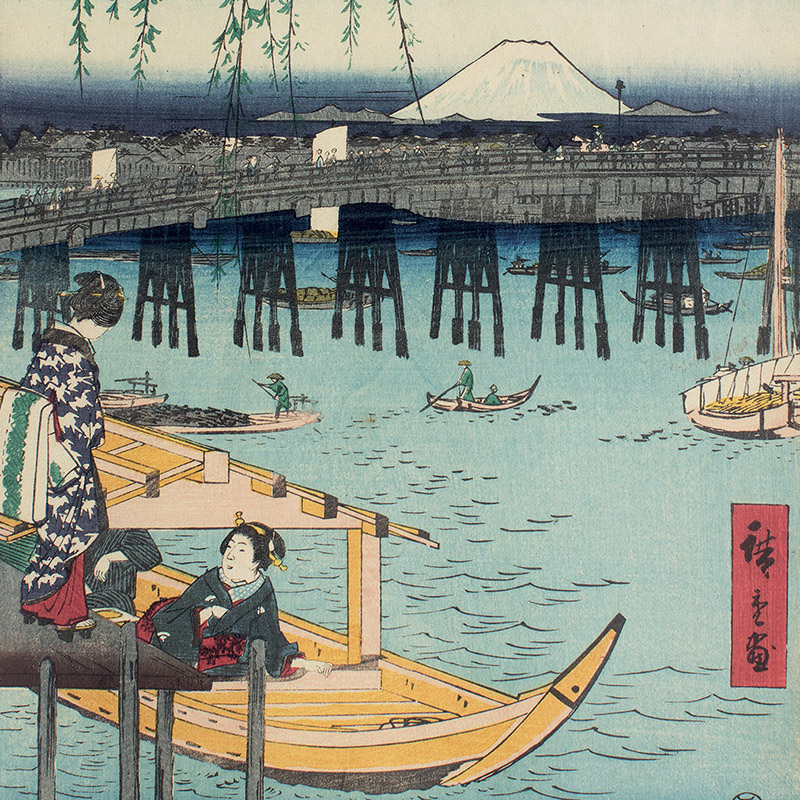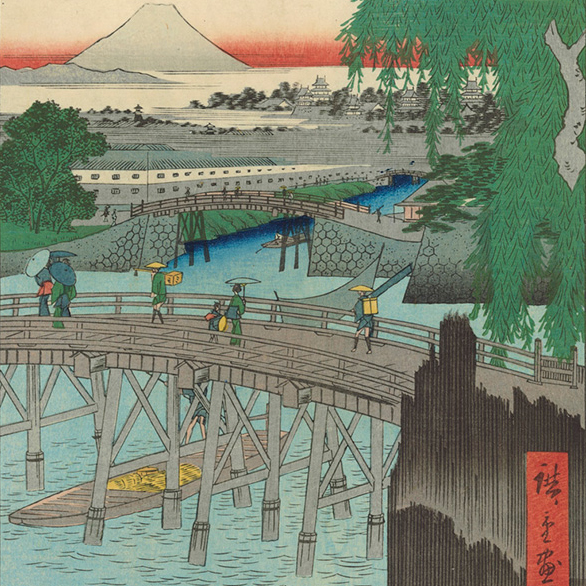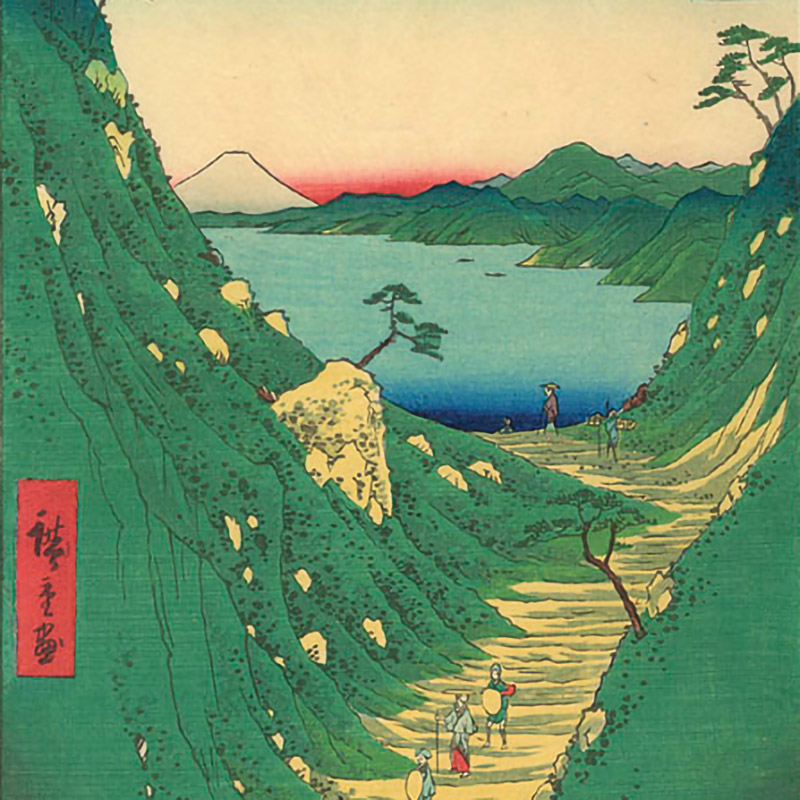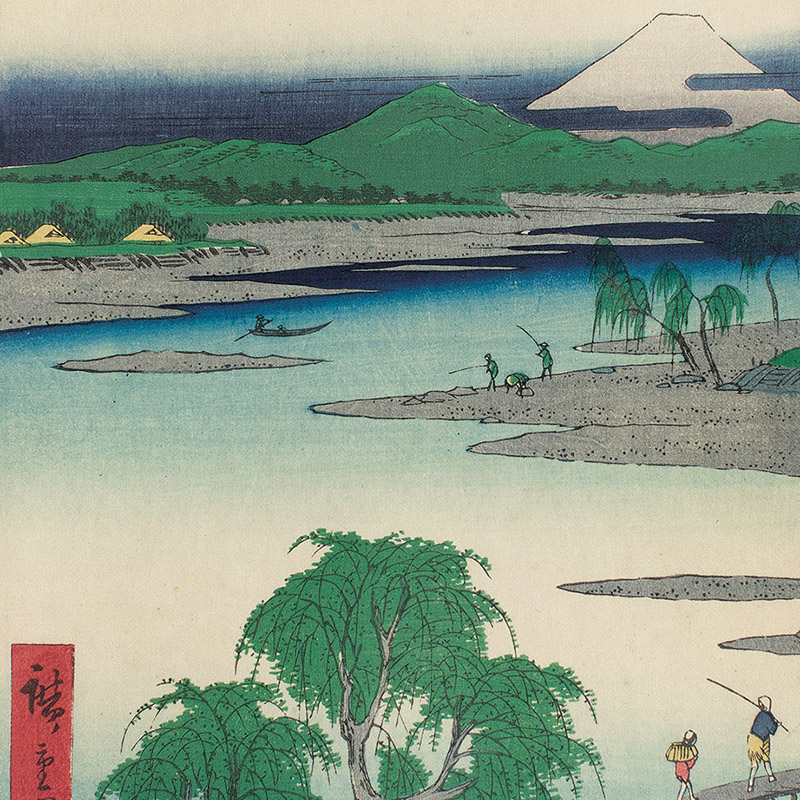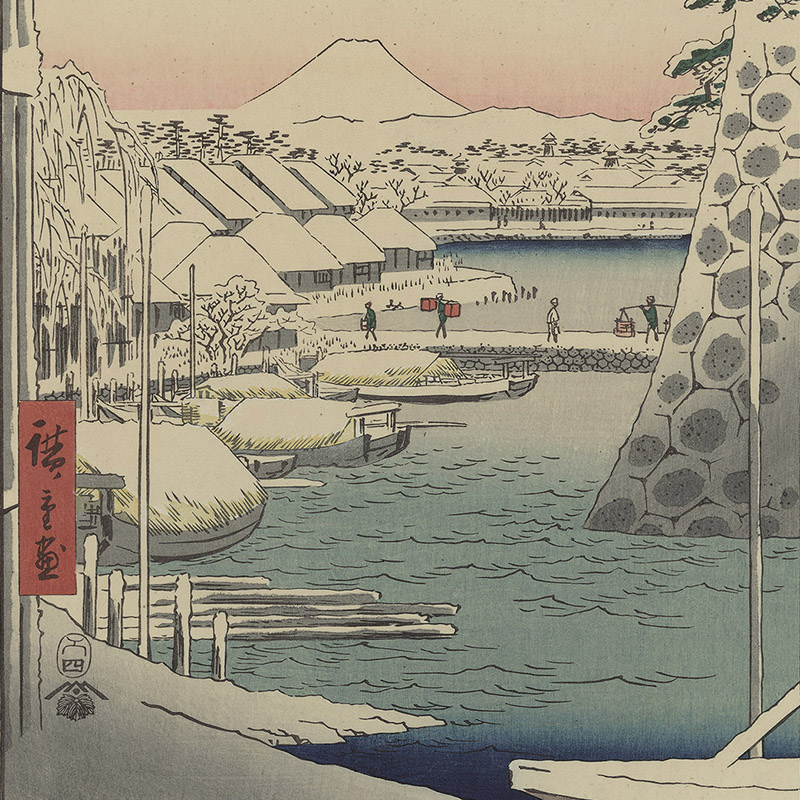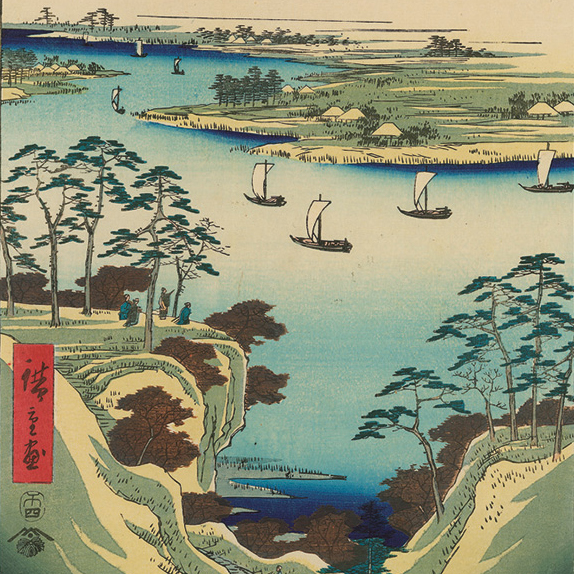Utagawa Hiroshige
1797 - 1858
Ukechi, Akiba No Keidai
1857
Vertical ōban, 360 x 245 mm
Signed: Hiroshige ga
Publisher: Uoya Eikichi
Censorship: Aratame
Date seal: Snake 8 (1857)
Series: One Hundred Famous Views of Edo, Autumn, no. 91
Meisho Edo Hyakkei
Fine impression, with traces of mica powder, good margins, fine colour and condition.
Located in the village of Ukechi, the Akiba Shrine was devoted to the fire god. In this view Hiroshige handles in his own distinctive way a visual effect borrowed from the West: the reflection of trees in the water. In this reflection the red of the maples is softened to a light pink. One interesting detail is the figure of the priest seated in the corner of the teahouse to the lower left. It has been proposed that this priest is none other than Hiroshige himself, who had taken the tonsure and became a lay priest in the third month of 1856, just at the time that the One Hundred Famous Views of Edo began to appear.
For another fine impression see at the Museum of Fine Arts in Boston no. 11.26347
References
Andrew Stevens, The Edward Burr Van Vleck Collection of Japanese Prints, Madison, Wisconsin, 1990, no. 91
H. D. Smith II – A. G. Poster, Hiroshige: One Hundred Famous Views of Edo, New York, 2000, no. 91
Price on application
Information on the master
Born in Edo in 1797, Hiroshige whilst still a teenager, was allowed to work in the studio of Utagawa Toyohiro, an artist with a preference for classical and landscape subjects. He studied also Nanga painting under the artist Ooka Umpo. In the 1812 he adopted the name Hiroshige. The first prints to be published under this name were images of beautiful women, a few surimono and landscapes in small format. In 1831 Hiroshige designed a successful series of Sights of Edo. In 1832 he accompanied the annual procession from Edo to the emperor in Kyoto along the Tokaido. During the journey, he sketched the scenes which he later put into the fifty-five prints which made up the celebrated series of views of the fifty-three post stations on the route. The series was revolutionary, the scenes had a naturalness and sense of immediacy that provoked instant popular appeal. This established Hiroshige as the painter of Tokaido scenes and, subsequently, he produced some thirty series on the same theme. Many highly successful landscape series would follow such as the Sixty-nine Stages on the Kiso Highway, the One Hundred Famous Views of Edo, the Thirty six Views of Mount Fuji. In his declining years, in addition to landscapes, he created an unique style in depicting birds and flowers.
Other works of the master
